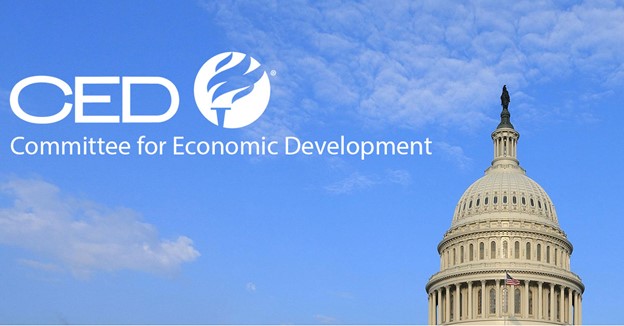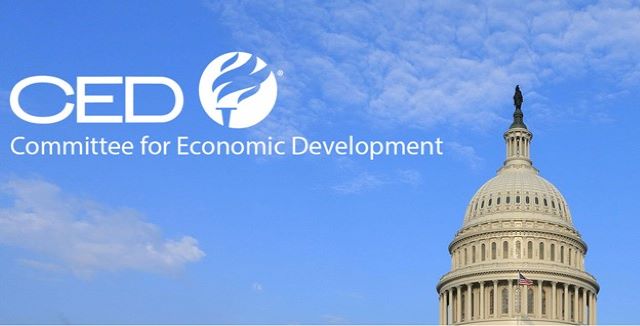However severe the crisis, organizations shouldn’t neglect the engagement of their employees. Organizations’ responses to the crisis and treatment of employees will have a lasting impact on engagement and retention in two ways:
-
Continuation of work during the crisis If employees’ motivation and focus decrease due to stress and frustration, their productivity will be greatly diminished. No one knows how long the pandemic will last and how devastating its consequences may be; however, this is a time when employee efforts may be needed more than ever in many organizations.
-
Retention of employees after the crisis According to the C-Suite Challenge™ survey by The Conference Board, year after year, one of the top five concerns for CEOs globally has been attracting and retaining employees.1 Companies that do not treat their employees well during a crisis will face lowered employee engagement, which in turn will lead to increased voluntary turnover once employees can find other options.2
Research by The Conference Board on the DNA of Engagement finds there are eight elements of a highly engaging organizational culture.3 Today, these elements are more important than ever. To keep employees engaged during the COVID-19 crisis and afterward into the recovery, The Conference Board recommends that organizations take the following steps, based on the eight elements:
-
Lead with compassion and make employee safety a top priority. The DNA of Engagement Element 1 is to align the business strategy with your engagement strategy. Focusing on health and safety is the right thing to do for both the organization and its employees during this time. Employees cannot be productive and effective at work if they are concerned about safety and health for themselves or a loved one. The 2019 Edelman Trust Barometer report found that most employees trust their employers to do what is right more than they trust the government, media, or NGOs—even those who generally lack faith in the system still trust the organizations that employ them.4 In fact, the VP of Global Product Strategy and Experience at American Express Global Business Travel said that “companies have a moral and legal obligation to look after employees—whether it’s mitigating risk or looking after their general health and wellbeing.”5 With this trust in mind, it is imperative that organizations understand that their employees are distracted and need to be able to focus on their personal situations as well as contribute in their work roles. Many workplaces are supplying workers with personal protective equipment and/or providing hazard pay to employees on the front lines.
-
Engage in storytelling to underscore the link between work and organizational mission. The DNA of Engagement Element 2 is to develop an organizational philosophy that emphasizes a core purpose. Reminding employees of the vision and values of the organization may be especially important during challenging and stressful times. Some organizations are working to increase morale through storytelling, by sharing how continued persistence and sustained efforts are affecting customers, communities, and their fellow employees. For example, one health care provider sends workers regular reminders of the impact they are having on patients. Other organizations are providing an outlet for community involvement for workers who feel distanced from others, setting up fundraisers, presenting opportunities for workers to donate resources to colleagues with children at home, or offering PTO to those affected by the pandemic.
-
Recognize that any action taken during the crisis could affect employee morale, employment brand, and company reputation. The DNA of Engagement Element 3 is to create formal programs and policies that drive the engagement agenda.Similar to how organizations respond to social change issues, organizations must determine the costs and benefits, and thus the overall impact, of policies and support they provide during the crisis.6 Many organizations are concerned about fair treatment of workers during the pandemic; how employees and other stakeholders perceive this treatment directly affects the corporate reputation and employer brand. Gig organizations such as Uber, Lyft, and DoorDash have implemented emergency sick leave, and Facebook has committed to paying its contingent workers.7 Organizations should realize that if they must conduct layoffs, it is essential that they treat well both those who go and those who remain.8 It is also important to keep some “normal” policies and practices going during this disruptive change; for example, recognition programs are particularly important as employees struggle to maintain motivation and productivity.
-
Prioritize transparent, timely, and honest dialogues with employees. The DNA of Engagement Element 4 is to ensure communication is open, proactive, and leader driven. Leaders should recognize that they play an essential role in reducing employee anxieties during a crisis and that they need to help rebuild morale.9 Organizations and senior leaders should provide regular updates on the financial health of the company and address employees’ questions continuously. Many companies have implemented daily or weekly virtual town halls led by senior leadership; they also share all relevant information through various internal communication channels (e.g., email, intranet, and department meetings) to ensure consistent messaging.10
-
Be sensitive to new ways of working. The DNA of Engagement Element 5 is to assemble a workplace and organizational structure that promotes collaboration and inclusion.Today, many organizations have adopted remote working for all or most employees, creating challenges with IT connectivity, children at home or, conversely, lack of human interaction, to name a few.11 Organizations should consider as much flexibility as needed, such as split shifts to cover childcare, fewer meetings, and relaxed deadlines.
-
Consider a continuous listening program. The DNA of Engagement Element 6 is to develop a regular cadence for assessment and follow-up.To demonstrate to employees that they have a voice, organizations should consider continuous listening, a strategy that aims to gather insights and frequent feedback from the workforce. Organizations now have the tools to collect and analyze a rich array of data from employees across the organization, including pulse surveys, internal collaboration platforms, health-monitoring devices, and social media. Many organizations are increasing the frequency of employee pulse surveys during this time and including questions specifically related to the current experience for employees (e.g., remote work experience).12
-
Provide resources for team leaders. The DNA of Engagement Element 7 is to expect and empower leaders to build engagement on their teams. Not all leaders are prepared to lead virtually or through the many new challenges they currently face. Organizations should share resources with team leaders and provide them with the support they need to be successful at this time. Encourage leaders to check in regularly with employees, hold video calls whenever possible to promote community, and empower their teams to be successful.13
-
Track employee metrics to determine what is working and what should change. The DNA of Engagement Element 8 is to demonstrate the business impact of engagement. While it may not seem top of mind at the moment, organizations can use people analytics during the crisis to provide real-time risk assessments, attain employee feedback and productivity information, and assist in workforce planning related to recent changes.14 This information will be invaluable as the organization considers “what’s next.”
| |
This report is part of the larger Human Capital Management during COVID-19 series created by The Conference Board to help HC leaders navigate the effects of the pandemic with their employees. The series reflects not only the latest research (ours and others') but also the comments and insights from our Members as they address this unprecedented challenge. To see the other reports in the series, visit The Conference Board COVID-19 Pandemic Resources & Support for the Human Capital Community.
|
|
Related Resources
DNA of Engagement hub
10 For more recommendations on this topic, see: Human Capital Management during COVID-19: Crisis Communications (forthcoming 2020).
11 For more recommendations on this topic, see: Human Capital Management during COVID-19: Remote Working (forthcoming 2020).
13 For more recommendations on this topic, see: Human Capital Management during COVID-19: Leadership through Crisis (forthcoming 2020).



